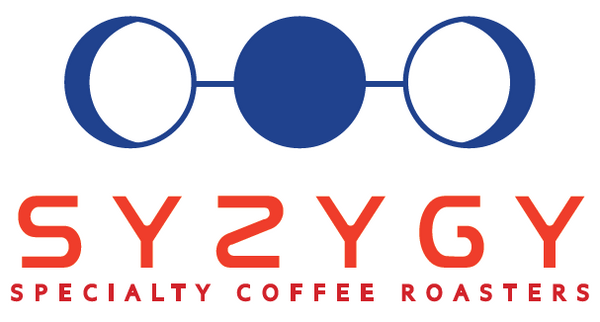
Espresso vs. Cappuccino vs. Latte: Discover the Differences | Syzygy Coffee
Share
The Ultimate Coffee Guide: Espresso, Cappuccino, and Latte Decoded
Welcome to our latest brew-tiful exploration where we dive deep into the heart of your favorite coffee drinks: Espresso, Cappuccino, and Latte. Whether you're a seasoned coffee aficionado or a curious newcomer looking to refine your coffee lexicon, this guide is your passport to understanding these beloved beverages.
Espresso: The Bold Foundation
Espresso is more than just coffee—it's a craft, a ritual, and the very essence of coffee culture. Characterized by its intense flavor and thick crema, Espresso serves as the foundation for many coffee drinks, including the Cappuccino and Latte. The secret lies in the fine grind and the high-pressure brewing process, which extracts the coffee's rich flavors and aromas. It's a concentrated beverage that packs a punch and delights the senses.
Cappuccino: The Perfect Balance
Imagine the perfect harmony of bold coffee melded with steamed milk and a cloud-like foam cap—welcome to the world of Cappuccino. Originating from Italy, this beloved coffee drink achieves a delicate balance between the robustness of Espresso and the creamy texture of milk. A traditional Cappuccino comprises equal parts of Espresso, steamed milk, and milk foam, creating a luxurious and frothy delight. It's the drink of choice for those who appreciate the strength of coffee but crave the softness and warmth of milk.
Latte: The Creamy Dream
The Latte, short for Caffè Latte, takes the milkiness to another level. This drink features a larger proportion of steamed milk to Espresso, topped with a light layer of foam. The result? A creamier, smoother coffee experience that's both comforting and invigorating. The Latte is a canvas for creativity, often adorned with latte art that makes each cup a visual and sensory pleasure. It's the go-to drink for those who enjoy the coffee flavor gently enveloped in creamy richness.
Conclusion: A Cup for Every Taste
Whether it's the bold jolt of an Espresso, the balanced embrace of a Cappuccino, or the creamy caress of a Latte, there's a coffee drink out there for every palate. Each beverage tells its own story, inviting you to savor the moments that make life rich and flavorful.
Coffee Fun Facts
1. **Espresso Base**: Did you know that many coffee drinks, including Lattes and Cappuccinos, start with a shot of espresso? This concentrated coffee serves as the foundation for a variety of coffee classics.
2. **Caffeine Content**: Despite their differences, a single shot of espresso, a Latte, and a Cappuccino generally have the same amount of caffeine. It's the volume of milk that changes, not the caffeine content.
3. **Foam Art**: The artful designs on the top of your Latte or Cappuccino aren't just for looks. Did you know that the consistency of the milk foam is crucial for creating those beautiful patterns, and skilled baristas can create incredible designs?
4. **Espresso Origin**: Espresso comes from Italy, and its name literally means "pressed out," referring to the way hot water is forced through the coffee grounds. It's a method that was invented in the early 20th century to speed up coffee brewing for customers.
5. **Milk Temperature Matters**: For a perfect Cappuccino or Latte, did you know that the temperature and texture of the steamed milk are essential? The ideal temperature for steamed milk in these drinks is between 150°F to 155°F (65°C to 68°C), which optimizes sweetness and creaminess.
6. **Microfoam**: The silky, smooth foam that tops your Latte or Cappuccino is called "microfoam." It's created by introducing very fine air bubbles into the milk, which requires a precise technique and practice to perfect.
7. **Espresso Shots are Quick**: A proper espresso shot is brewed in about 25 to 30 seconds. This quick extraction process is key to achieving the rich flavor and creamy texture that espresso is known for.
8. **Cappuccino Daytime Drink**: In Italy, Cappuccino is traditionally considered a breakfast or morning drink, and Italians might not order it after 11 AM. This is because the milk content is thought to be too heavy for the stomach later in the day.
9. **Latte Proportions**: Did you know that in a traditional Latte, the ratio of milk to coffee is much higher than in a Cappuccino, usually around 3 parts milk to 1 part espresso? This makes it a creamier, less intense coffee experience.
10. **Espresso Machine Patent**: The first espresso machine was patented in 1884 by Angelo Moriondo of Turin, Italy. However, it was Luigi Bezzera and Desiderio Pavoni who made significant improvements to the design, making it more suitable for commercial use.
